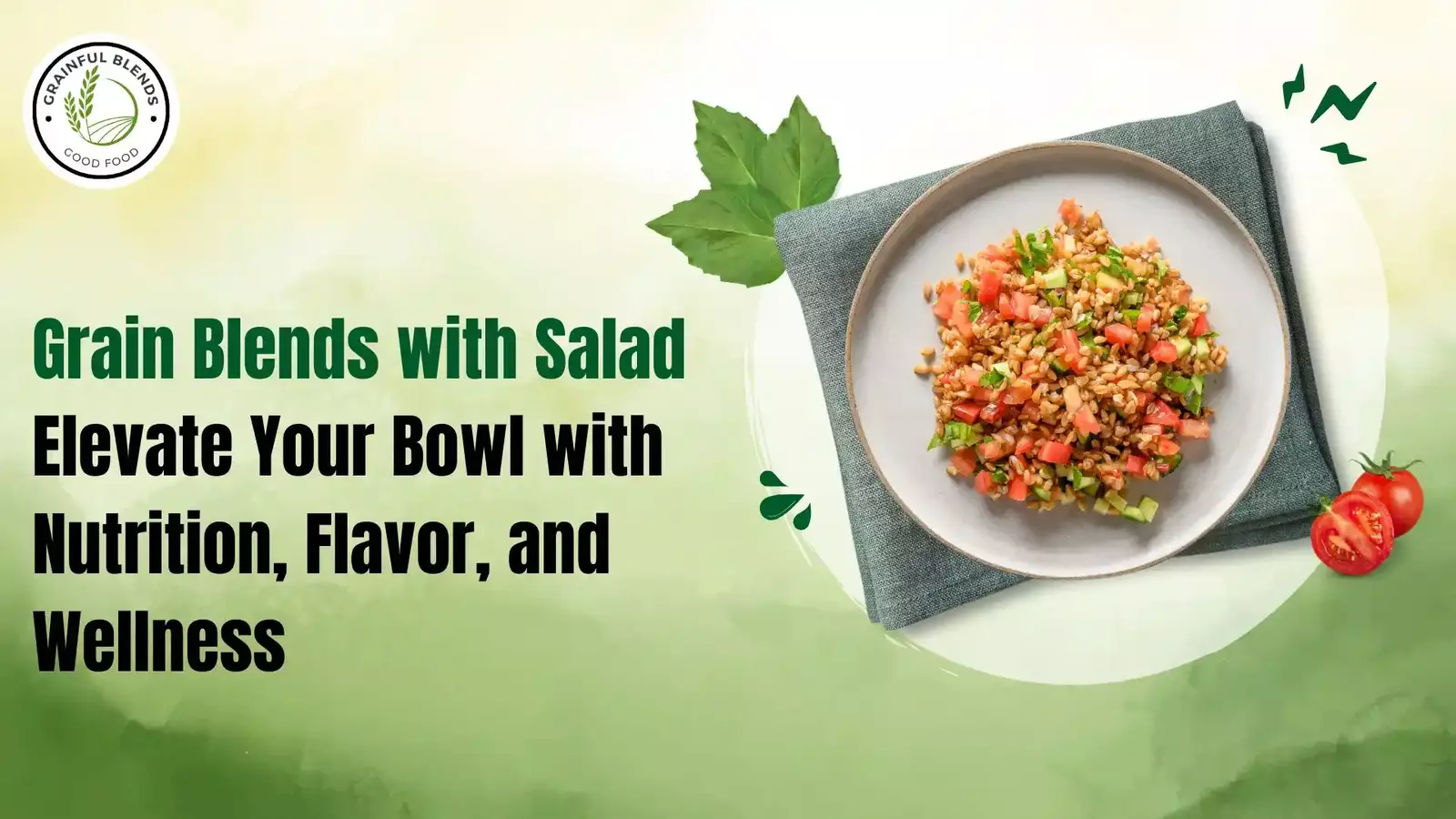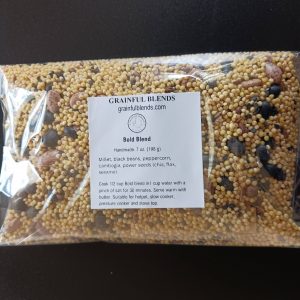Grain Blends with Salad: Elevate Your Bowl with Nutrition, Flavor, and Wellness
Grain Blends with Salad: Elevate Your Bowl with Nutrition, Flavor, and Wellness
In the world of wholesome eating, few combinations are as satisfying, versatile, and nutrient-dense as grain blends with salad. Whether you’re meal-prepping for the week, looking to improve your gut health, or simply trying to add more whole foods to your diet, grain blends bring a powerful boost to your salad game.
This guide will walk you through why adding grains to your salad is more than just a culinary trend—it’s a simple, delicious step toward a healthier lifestyle.
What Are Grain Blends?
Grain blends are combinations of whole grains such as quinoa, brown rice, barley, farro, bulgur, millet, and wild rice. These blends can be customized for flavor, texture, or nutritional benefit, and when paired with fresh greens and vegetables, they create a salad that’s both hearty and health-supportive.
You’ve probably seen grain salads pop up at cafes, restaurants, and food blogs. There’s a reason why: they’re delicious, customizable, and they pack a serious nutritional punch.
Benefits of Adding Grain Blends to Your Salad
1. Boosts Nutritional Value
Grains provide an array of macronutrients and micronutrients that most leafy salads alone lack. Think:
- Complex carbohydrates for sustained energy
- Plant-based protein (especially in grains like quinoa or farro)
- Iron, magnesium, and zinc to support immune and muscle function
- B vitamins for metabolism and cell health
Together, they help round out your meal into something truly nourishing.
2. Compliments Salad’s Natural Fiber Content
Leafy greens and veggies are already a great source of fiber, but adding whole grains takes it to the next level. Whole grains provide insoluble fiber, which works with the soluble fiber in vegetables to:
- Support digestion
- Feed beneficial gut bacteria
- Promote a sense of fullness and reduce cravings
This is especially helpful if you’re looking to manage weight or maintain steady energy throughout the day.
3. Improves Heart Health
Whole grains have been extensively studied for their ability to:
- Lower LDL cholesterol
- Reduce blood pressure
- Decrease the risk of heart disease
By combining them with heart-friendly salad ingredients like leafy greens, tomatoes, avocados, and olive oil, you’re creating a synergistic plate that supports cardiovascular health.
4. Great for Blood Sugar Control and Diabetes Management
Grain blends made with low-glycemic options like quinoa, barley, and bulgur help regulate blood sugar levels. Paired with high-fiber vegetables and a protein source (like beans, tofu, or grilled chicken), your salad becomes a blood sugar-stabilizing powerhouse.
This is crucial for those managing type 2 diabetes or insulin resistance, as the fiber slows glucose absorption and prevents blood sugar spikes.
5. Supports Healthy Weight Management
Because of the fiber, slow-digesting carbs, and protein, grain-based salads:
- Keep you full longer
- Reduce the likelihood of overeating later
- Help balance blood sugar, which can curb energy crashes and sugar cravings
They’re perfect for anyone trying to maintain or lose weight without sacrificing satisfaction or flavor.
6. Flavor, Texture, and Variety
Grains add chewiness, nuttiness, and richness to an otherwise light salad. Mixing grains like wild rice or farro with greens introduces texture contrast, while spices, herbs, or vinaigrettes soak into the grains for extra flavor.
This opens up endless combinations: Mediterranean, Asian-inspired, Southwest, Moroccan—whatever your palate craves.
Best Grain Options for Salads
Here are a few grains that work beautifully in salads, along with their unique benefits:
| Grain | Flavor/Texture | Key Benefits |
| Quinoa | Fluffy, nutty | High in protein, gluten-free, contains all 9 essential amino acids |
| Farro | Chewy, earthy | Rich in fiber, iron, and magnesium |
| Bulgur | Light, slightly nutty | Quick-cooking, high in fiber, low glycemic index |
| Barley | Chewy, mildly sweet | Lowers cholesterol, good for blood sugar control |
| Brown Rice | Mild, soft | Whole grain, gluten-free, fiber-rich |
| Wild Rice | Earthy, firm | High in antioxidants and protein |
How to Build the Perfect Grain Salad Bowl
Here’s a quick formula to build a balanced grain-based salad:
- Base: Start with a mix of greens like arugula, kale, spinach, or romaine.
- Grain: Add ½ to 1 cup of cooked grain (cooled to room temp).
- Protein: Add chickpeas, black beans, tofu, grilled chicken, or a boiled egg.
- Colorful Veggies: Mix in roasted veggies (like sweet potato, carrots), or fresh ones (cucumbers, bell peppers).
- Healthy Fats: Toss in avocado, olives, nuts, or seeds.
- Flavor Boosters: Try feta, dried fruit, pickled onions, or herbs.
- Dressing: Drizzle a vinaigrette made with olive oil, lemon juice, mustard, or tahini.
Sample Recipe: Mediterranean Millet Salad
Ingredients:
- 1 cup cooked millet
- 2 cups chopped arugula
- 1/2 cup cherry tomatoes, halved
- 1/4 cup crumbled feta
- 1/4 cup kalamata olives, pitted
- 2 tbsp red onion, sliced
- Juice of 1 lemon
- 2 tbsp olive oil
- Salt and pepper to taste
Instructions:
- In a large bowl, combine all ingredients.
- Toss with lemon juice and olive oil.
- Serve chilled or room temperature. Enjoy!
Final Thoughts
Grain blends with salad are more than a food trend—they’re a nutrient-dense, flavor-packed, and satisfying way to eat well every day. By incorporating whole grains into your salad, you’re not only elevating taste and texture but also deeply supporting your health.
Whether you’re managing chronic conditions like diabetes, hypertension, or high cholesterol, or just aiming to feel more energized and nourished, this simple addition can make a big difference.
So go ahead—cook a batch of your favorite grain, toss it with fresh veggies, and discover a whole new way to love your salad.
Looking for grain blend recipes or ready-to-eat options? Stay tuned for our roundup of the best pre-cooked blends and how to use them in your weekly meal prep!







